Searching for the best AI development software in 2023? We will review some of the top options available today.
Simulated intelligence advancement programming is programming that permits clients and organizations to assemble strong simulated intelligence devices to smooth out different undertakings with astounding velocity and productivity. You’re likely acquainted with some well known simulated intelligence instruments previously created.
Instances of man-made intelligence apparatuses include:
- ChatSonic and other well-known AI chatbots like ChatGPT
- Jasper and other AI writing tools aid in content creation and optimization. questions.
- Live visit programming for smoothing out web-based client service.
- Simulated intelligence showcasing apparatuses for creating deals duplicate and computerizing work processes
- Simulated intelligence craftsmanship generators like MidJourney and PhotoSonic help creatives produce astonishing advanced work of art and pictures.
- AI voice generators and similar text-to-speech tools for generating speech that is lifelike from text for a variety of uses.
- Artificial intelligence Web optimization apparatuses for enhancing site content to rank higher in query items.
These man-made intelligence instruments are perfect out-of-the-case answers for some, designers are finding it simpler than at any other time to utilize artificial intelligence advancement programming to construct custom man-made intelligence apparatuses to meet more unambiguous requirements.
Depending on the platform, developers can even utilize drag-and-drop interfaces and other useful no-code features. Custom chatbots are being developed by online retailers using AI development software to improve customer service and increase conversion rates.
In order to increase revenue, businesses are utilizing custom AI machine learning software to generate sophisticated data reports. And that is only the beginning of the problem.
Types of AI Tool Development Software
The best AI tool development software typically provides the following options:
Simulated intelligence Advancement Stages
These extensive arrangements empower the development of computer based intelligence applications starting from the earliest stage. They make it easier to design and modify AI models by providing a user-friendly interface with drag-and-drop capabilities and a wide variety of pre-built algorithms. These stages oblige designers with shifting expertise levels and act as a flexible base for simulated intelligence projects.
Learning by doing
Concentrate on training artificial neural networks based on the human brain for tasks that require intelligence similar to that of a human. Software for deep learning makes use of architectures like Convolutional Neural Networks (CNNs) and Recurrent Neural Networks (RNNs) in a variety of applications, including speech recognition, natural language processing, and computer vision. These apparatuses frequently depend on huge datasets, strong computational assets, and high level enhancement procedures to work on model execution.
AI
Empower PCs to gain from information by recognizing examples and connections. These instruments utilize different calculations and methods, for example, choice trees, grouping, and relapse examination, to construct prescient models that can settle on information driven choices and adjust over the long haul as new information opens up.
AI for Conversation
Focuses on simulating conversations that are human-like, allowing developers to create conversational agents that are interactive and responsive. To effectively comprehend and respond to user inputs, these tools make use of natural language processing and other AI methods.
Pre-trained models, user-friendly UIs, and a wealth of information to help newcomers get started are all hallmarks of the most effective AI development platforms.
What are the Best AI Development Software?
On the off chance that you’ve been investigating man-made intelligence improvement, you’ve probably heard a significant number of these large names. However, to provide you with a thorough understanding of their capabilities, we will provide an overview of the leading development platforms.
1) Google Cloud AI Platform
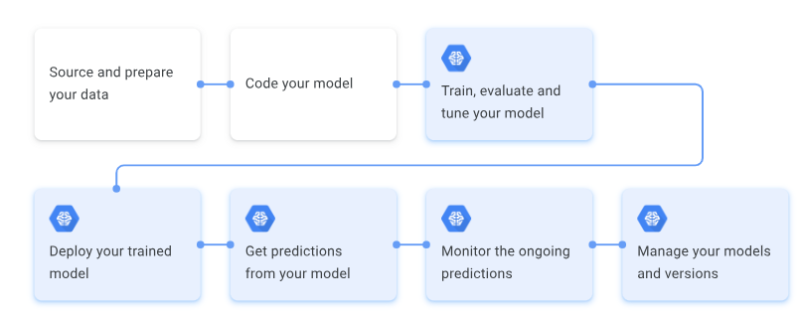 With popular frameworks, developers can build, train, and deploy machine learning models with Google Cloud AI Platform, a cloud-based service. With a lot of generally embraced pre-prepared models, simulated intelligence engineers can rapidly begin constructing their own instruments with the fundamentals covered.
With popular frameworks, developers can build, train, and deploy machine learning models with Google Cloud AI Platform, a cloud-based service. With a lot of generally embraced pre-prepared models, simulated intelligence engineers can rapidly begin constructing their own instruments with the fundamentals covered.
Key Features:
- Built-in algorithms for tasks like natural language processing, image and speech recognition, and predictive analytics
- Versatile and straightforward stage for building, preparing, and sending ML models
- Ample documentation to assist in learning the platform and developing sophisticated products.
- Shopify is utilizing Google’s Discovery AI to give advanced online retailers access to advanced product search based on AI
- It is a preferred platform for pre-trained models that developers can immediately use and rely on as a foundation.
2) Microsoft Azure AI
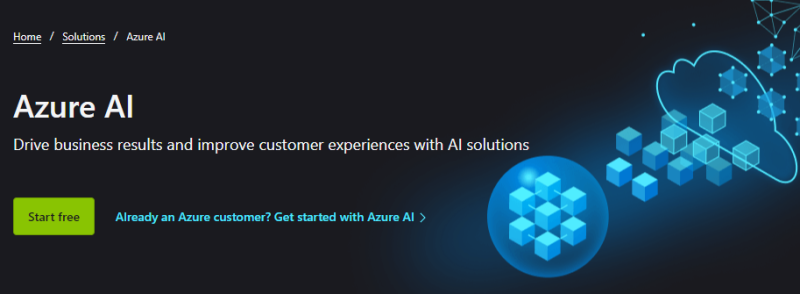
Microsoft Azure AI provides enterprise-ready AI services and tools for building, deploying, and managing AI solutions at scale, including machine learning, deep learning, and cognitive benefits.
Key Features:
- Scalable platform for building, deploying, and managing AI solutions at scale.
- Allows AI developers to create custom AI models.
3) IBM WATSON
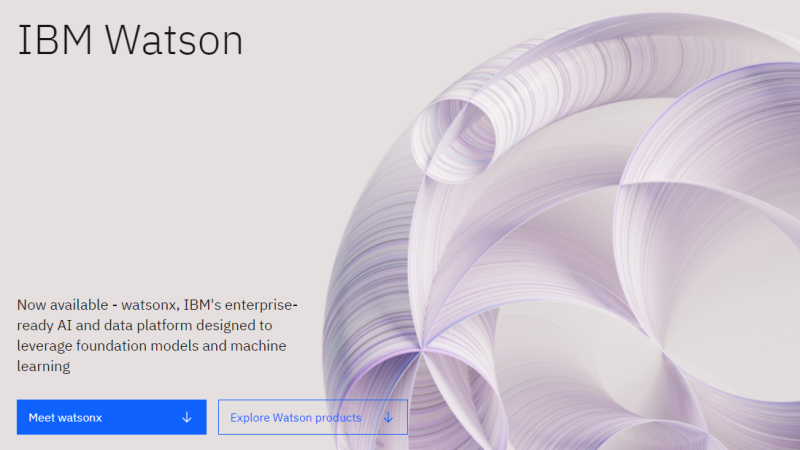 IBM Watson is a conversational AI platform designed for question-and-answer use cases. It integrates with popular development tools like Visual Studio and GitHub. It offers tools for machine learning, deep learning, and cognitive services.
IBM Watson is a conversational AI platform designed for question-and-answer use cases. It integrates with popular development tools like Visual Studio and GitHub. It offers tools for machine learning, deep learning, and cognitive services.
In addition, it determines the meaning of a question and then produces precise responses by utilizing NLP, ML, and knowledge representation. It’s utilized in numerous business use cases; essentially client service applications.
Key Features:
Pre-built AI services, APIs, and development tools System integration for applications in customer service, healthcare, and education make use of techniques from natural language processing (NLP).
4) Infosys XtractEdge
 Infosys XtractEdge is a man-made intelligence stage created by Infosys that assists organizations with robotizing complex business processes, further develop efficiency, and gain important bits of knowledge utilizing AI, profound learning, and normal language handling. All of this is primarily accomplished through document information extraction.
Infosys XtractEdge is a man-made intelligence stage created by Infosys that assists organizations with robotizing complex business processes, further develop efficiency, and gain important bits of knowledge utilizing AI, profound learning, and normal language handling. All of this is primarily accomplished through document information extraction.
Key Features:
- Use ML and NPL to mine data concealed inside records
- Changes over non-text data (pictures) to message utilizing optical person acknowledgment (OCR) so it tends to be handled
- Can mechanize record information extraction.
5) H2O.AI
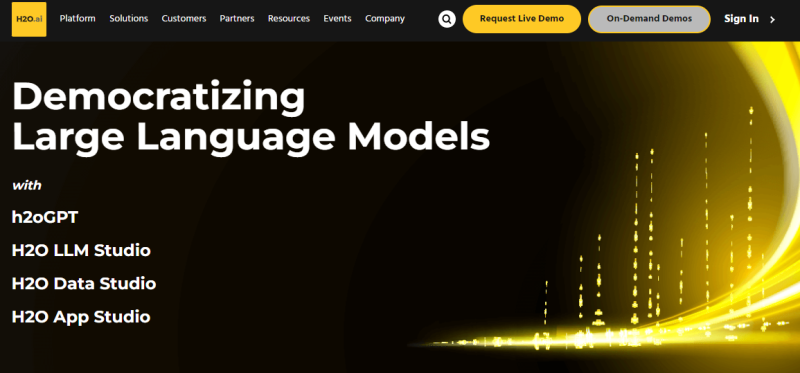 The open-source machine learning platform that H2O.AI provides enables developers to construct and scale AI models. It highlights pre-prepared, open-source computer based intelligence models and calculations. Its open-source nature permits engineers to self-have their models or pick choices for either on-premises or cloud arrangements.
The open-source machine learning platform that H2O.AI provides enables developers to construct and scale AI models. It highlights pre-prepared, open-source computer based intelligence models and calculations. Its open-source nature permits engineers to self-have their models or pick choices for either on-premises or cloud arrangements.
Key Features:
- Offers an open-source computer based intelligence stage
- Basically worked for business applications
- Adaptable sending answers for picking the specific security control required.
6) Google Dialogflow
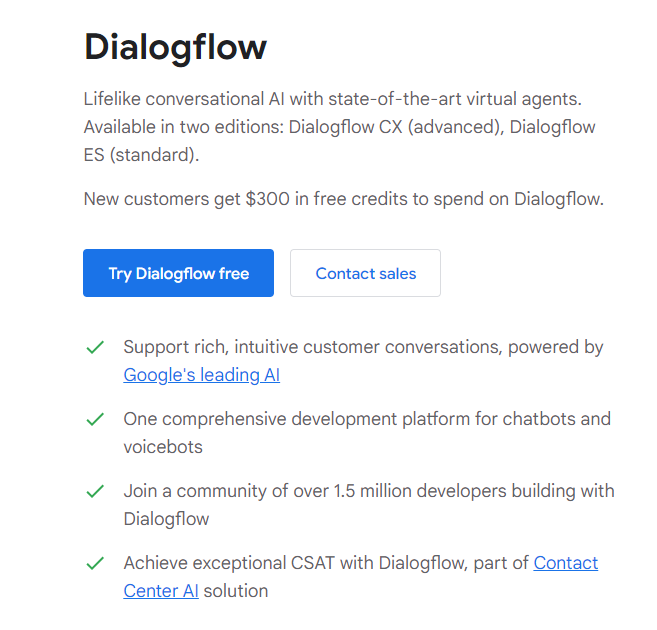 Under Google Cloud AI, a chatbot-building service called Google Dialogflow lets developers use natural language processing (NLP) to create conversational agents and connect them to other messaging platforms.
Under Google Cloud AI, a chatbot-building service called Google Dialogflow lets developers use natural language processing (NLP) to create conversational agents and connect them to other messaging platforms.
The platform receives standard questions and answers from developers. From that point, individual expressions and words can be ordered to prepare it on how they are ordinarily utilized and perceived.
DialogFlow then learns how to respond to similar questions based on that training by using that categorization. DialogFlow is directly integrated with numerous leading AI chatbot and customer support platforms, facilitating the development of sophisticated bots for a variety of uses, including customer support. Among the best are LandBot, Ubisend, and Trengo.
Key Features:
- Natural language processing makes it possible for developers to create conversational interfaces.
- It also makes it possible for developers to integrate chatbots with a variety of messaging platforms and voice assistants.
7) BigML
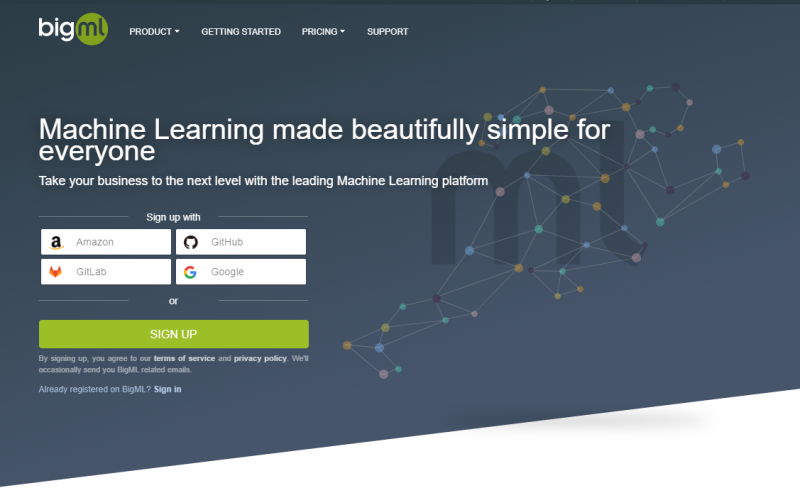 BigML is a cloud-based machine learning platform that provides developers with tools and algorithms for building and deploying predictive models using decision trees, random forests, and deep neural networks, among other machine learning methods. It is one of the platforms with the simplest initial setup.
BigML is a cloud-based machine learning platform that provides developers with tools and algorithms for building and deploying predictive models using decision trees, random forests, and deep neural networks, among other machine learning methods. It is one of the platforms with the simplest initial setup.
Key Features:
- On the platform, you can build, deploy, and manage custom AI models that use machine learning algorithms like decision trees, random forests, and deep neural networks.
- These models can be deployed on-premises or in the cloud.
8) Viso Suite
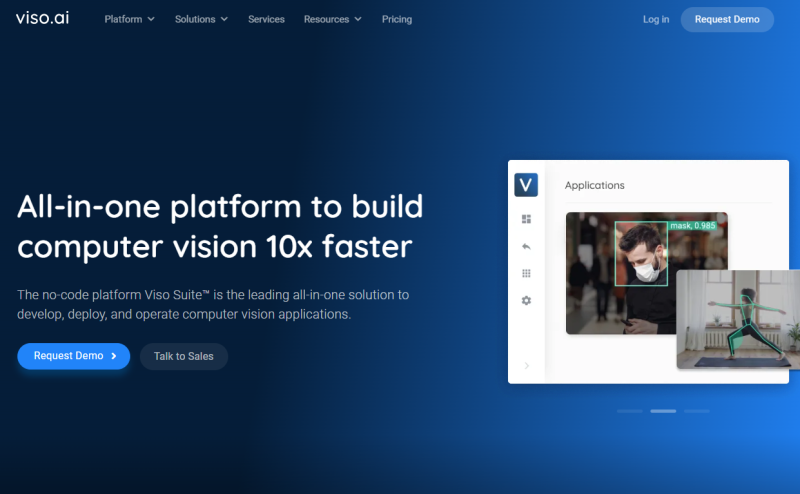 Viso Suite is a man-made intelligence fueled PC vision programming stage. Businesses can use it to develop their own computer vision applications because it offers a comprehensive platform for application development. This can be used to keep track of traffic and inventory, among other things.
Viso Suite is a man-made intelligence fueled PC vision programming stage. Businesses can use it to develop their own computer vision applications because it offers a comprehensive platform for application development. This can be used to keep track of traffic and inventory, among other things.
Key Features:
- Joins strong PC vision with an application advancement stage.
- This low-code solution has pre-built integrations to make the low-code environment even more flexible.
- It can speed up the development of advanced AI systems.
9) Observe.AI
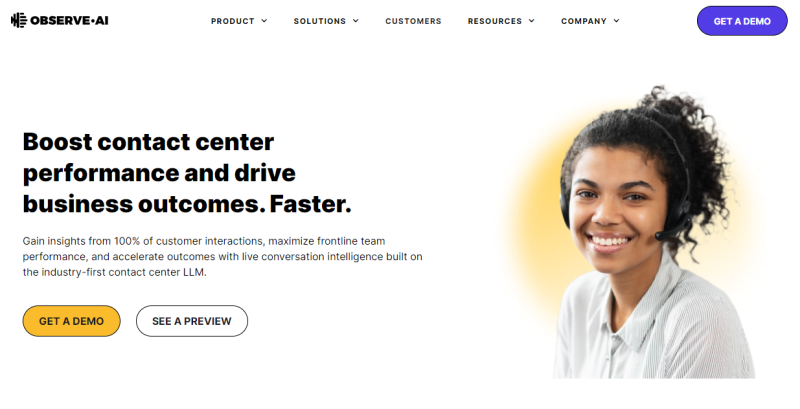 Man-made intelligence is a computer based intelligence fueled call place arrangement that utilizes regular language handling and discourse acknowledgment to dissect and decipher client discussions continuously.
Man-made intelligence is a computer based intelligence fueled call place arrangement that utilizes regular language handling and discourse acknowledgment to dissect and decipher client discussions continuously.
The advantages are that it empowers organizations to acquire bits of knowledge into client opinion, recognize drifts, and further develop specialist execution at scale. Using Observe, AI developers working on customer experience (CX) and support can significantly accelerate insight adoption.
Key Features:
- Discourse acknowledgment, record, and NLP layered into a strong voice stage
- Investigation abilities to see what’s happening across a whole help association
- Profound investigation and bits of knowledge to fix issues and profit by top execution patterns.
Which Is The Best AI Development Software?
Microsoft Azure AI and Google Cloud AI Platform stand out as the best AI development software options currently available. Google Cloud simulated intelligence Stage best suits designers looking for a versatile, cloud-based help that upholds well known structures like TensorFlow and Scikit-learn.
It offers strong implicit calculations, ideal for dealing with errands, for example, picture acknowledgment and regular language handling. Then again, Microsoft Sky blue computer based intelligence is an amazing decision for associations hoping to construct, convey, and oversee artificial intelligence arrangements at scale utilizing a venture prepared set-up of computer based intelligence administrations and apparatuses.
It works well with popular development tools like GitHub and Visual Studio, making it a robust and effective environment for businesses to use AI. Additionally, IBM Watson is something that should be seriously considered by those working on advanced Conversational AI products.
Want to use AI in your current job but aren’t ready to build your own AI tools? Take a look at our top recommendations for AI chatbots, the best AI writing software, and our overall favorite AI tools.
Frequently Asked Questions
1) What is the best artificial intelligence improvement programming?
The best AI development software is regarded as Google Cloud AI Platform. It provides built-in algorithms for various tasks, a scalable and user-friendly platform for building, training, and deploying machine learning models, and it supports well-known frameworks like TensorFlow and Scikit-learn. In addition, the platform provides a lot of documentation to make learning and making advanced AI products easier.
2) How can I develop my very own AI chatbot?
Start by deciding what your AI chatbot will be used for—customer support, lead generation, or information retrieval, for example. Choose where you need the chatbot to show up, like on your site or informing stages. Pick a chatbot stage that suits your necessities. Plan the chatbot discussion utilizing a chatbot manager, test its usefulness, and train it with pertinent information.
3) How can I use computer based intelligence in programming advancement?
There are many ways that AI can be used in software development. For instance, AI can improve productivity and efficiency in application development by automating tasks like code generation, bug detection, and quality assurance.
Also, artificial intelligence can be applied in Foundation as Code (IaC) to mechanize cloud asset provisioning, design, and the executives, empowering engineers to scale and oversee framework consistently with negligible manual mediation.
Conclusion
By now, we are sure you have found the best AI development software. The options we have shared are loaded with impressive features.
TensorFlow, PyTorch, and Scikit-Learn, are popular because of their flexibility, extensive community support, and the ability to modify the code as required. Commercial software, such as IBM Watson and Microsoft Azure Machine Learning, offer solid customer support and a more streamlined user experience, but at a higher cost.
In general, the choice of software depends on various factors like the complexity of the task, the expertise level of the team, the size and nature of the data, and the computational resources available.
Therefore, it is important to assess your needs and experiment with different platforms before making a decision.
See Also
